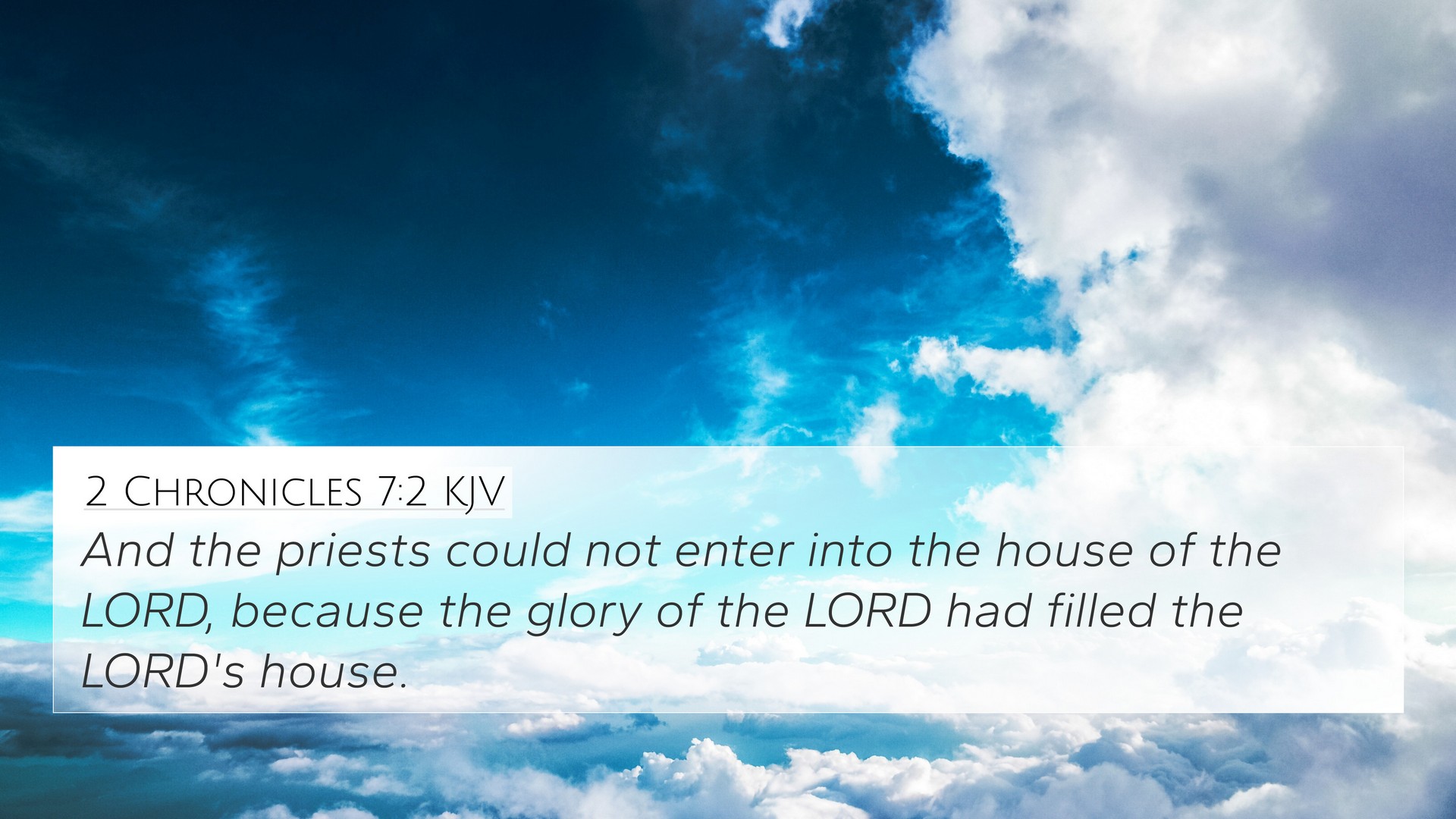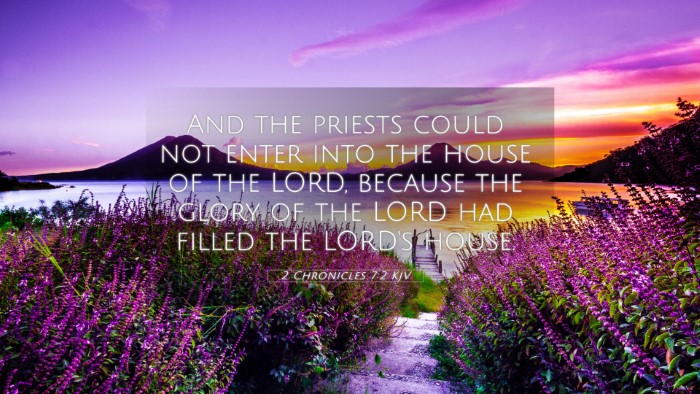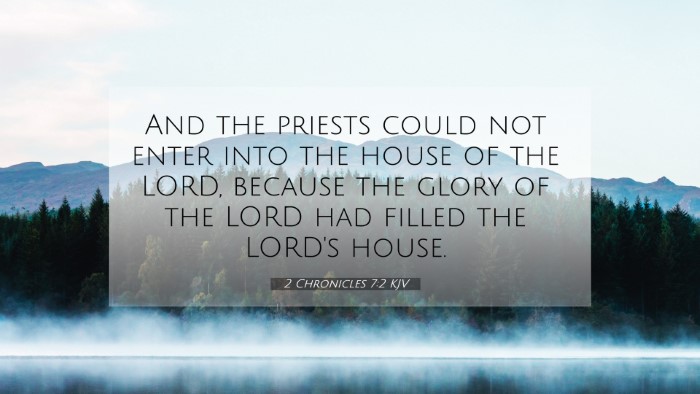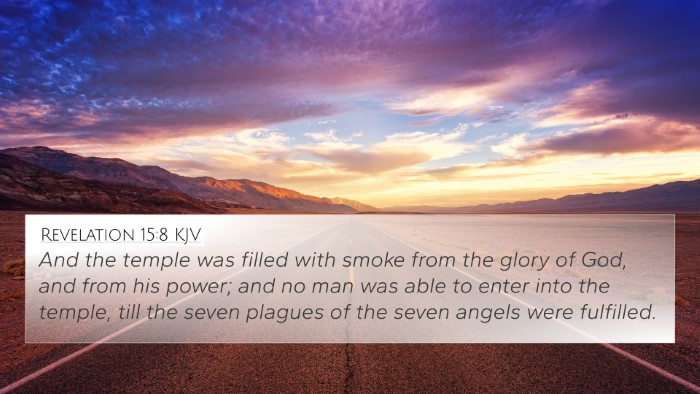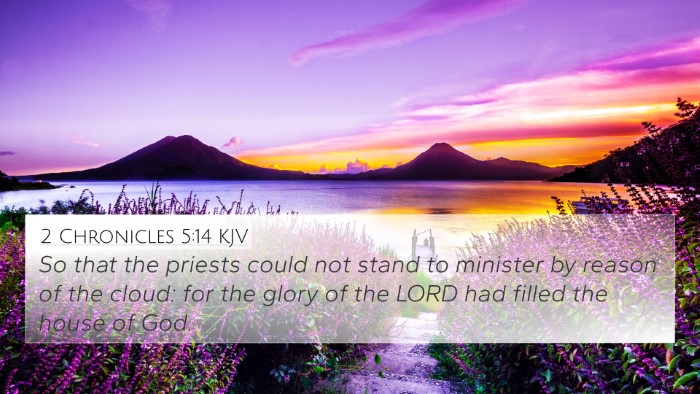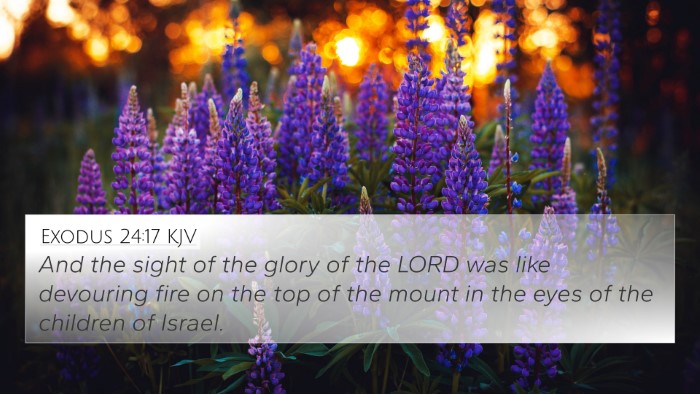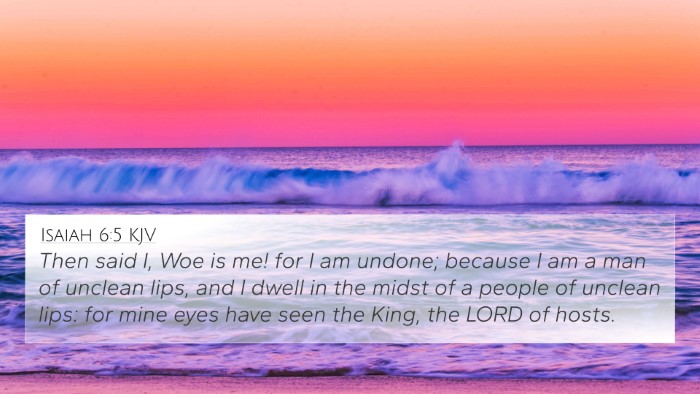Understanding 2 Chronicles 7:2
Verse: "And the priests could not enter into the house of the Lord, because the glory of the Lord had filled the Lord's house."
This verse depicts a powerful moment during the dedication of Solomon's temple, highlighting the overwhelming presence of God. The interpretation of this verse can be enriched by insights from various public domain commentaries.
Commentary Insights
-
Matthew Henry:
Henry emphasizes the significance of God's presence, noting that it filled the temple to the point that the priests could not enter. This signifies not just a physical impossibility but also conveys the idea that God's glory surpasses human ability. The inability of the priests reflects the holiness of God and serves as a prelude to understanding the sacredness and reverence required in worship.
-
Albert Barnes:
Barnes points out that the glory of the Lord being manifest in the temple serves to affirm God's approval of Solomon's work. The narrative shows how the divine presence marked the culmination of Solomon's efforts and the establishment of the temple as a holy place. The glory represents God's favor and is indicative of the temple's purpose as a place of meeting between God and man.
-
Adam Clarke:
Clarke discusses the implications of God's glory filling the temple, suggesting that it denotes a significant divine endorsement of the temple's establishment. He elaborates on the nature of God's presence, likening it to a protective and purifying force that sanctifies the space. Clarke also stresses the relationship between reverence for God and the awareness of His glory in worship.
Theological Significance
The verse not only describes a physical event but also evokes themes of God's transcendence and immanence. The filling of the Lord's house with glory serves as an embodiment of the connection between the sacred and the secular, illustrating how God's presence transforms a mere structure into a holy place.
Cross-References
To fully appreciate 2 Chronicles 7:2, it's beneficial to explore relevant Bible cross-references that enhance our understanding:
- 1 Kings 8:10-11: The cloud of the glory of the Lord filling the temple.
- Exodus 40:34-35: The glory of the Lord filling the tabernacle.
- Ezekiel 43:5: The glory of the Lord fills the temple.
- Isaiah 6:3: The seraphim declare the glory of the Lord.
- Romans 8:18: The glory that will be revealed in us.
- Revelation 21:23: The glory of God replacing the need for sun or moon.
- John 1:14: The Word became flesh and dwelt among us, full of grace and truth.
Connections Between Bible Verses
This verse emphasizes the thematic connections throughout the Bible, illustrating that themes of divine glory and presence are consistent. Understanding these connections through tools for Bible cross-referencing can greatly enhance the study of God’s presence throughout both the Old and New Testaments.
Linking Bible Scriptures
By examining how similar themes are presented in various books, worshippers can discover the overarching narrative of God’s interaction with humanity:
- Leviticus 16:2: God's presence among the people through the high priest.
- Acts 2:4: The Holy Spirit filling the believers, echoing the divine filling in the temple.
Thematic Bible Verse Connections
Linking 2 Chronicles 7:2 with other verses illuminates God’s active presence in the life of the believer and the community:
- Hebrews 10:19-22: Encouraging believers to enter boldly into the presence of God.
- Matthew 18:20: Where two or three are gathered in His name, there He is among them.
Tools for Bible Cross-Referencing
Utilizing tools for Bible cross-referencing, such as concordances, guides, and systems, can facilitate a more in-depth study of 2 Chronicles 7:2. Understanding how to find cross-references in the Bible allows for a richer experience as one engages with the text. Comprehensive resources can serve as a valuable aid in identifying connections between Old and New Testament scriptures.
Conclusion
2 Chronicles 7:2 profoundly illustrates the glory of God that filled the temple, offering insights into God's holiness and the sacredness of worship. By delving into commentaries, exploring cross-references, and appreciating the thematic connections between verses, believers can develop a deeper understanding of the scripture. This verse stands as a reminder of the importance of God’s presence in our worship and lives, and the transformative power it holds.
